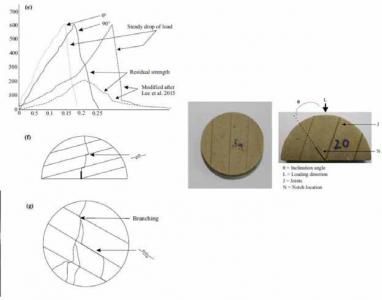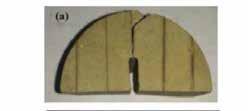

With the rising demand of the energy, India is looking forward to implement advance technology named fracking to explore previously untapped shale gas resources and to rejuvenate old brown fields. In fracking, a large volume of water is forcefully injected in the subsurface to create fractures. These fractures facilitate the movement of hydrocarbons to the producing well. But one of the first and very crucial stages of fracking is the fracture-mechanical characterisation of the target rocks.
In our current work, we aim to characterise the fracture-mechanical properties of multiple sedimentary rocks of India, that represent sandstone reservoirs and shale gas horizons. The work covers the following objectives:
■ Fracture-mechanical characterisation of the homogenous rocks under dry laboratory condition
■ Application of soft-computing and empirical study to predict fracture toughness from mechanical properties
■ Fracture-mechanical characterisation of homogenous rocks under in situ conditions, i.e. in presence of fluid saturation and elevated temperature
■ Building analogue models to understand fracture behaviour of the jointed rocks
■ Evaluation of the mixed-mode fracture criteria for the homogenous and jointed reservoir rocks
The experimental work was carried out on three types of sandstones and one type of shale, from different basins of India. All the index geomechanical properties, such as, compressive strength, tensile strength, ultrasonic velocities, and all the pure and mixed-mode fracture toughness were measured as function of fluid saturation and temperature. Analogue models of the jointed rocks were prepared and fracture behaviour was studied under multiple field-equivalent conditions. Fracture properties were correlated with the mechanical properties and new predictive models were proposed. Multiple advance soft-computing tools have been developed for easy and fast predictions. A detailed theoretical framework of joint-fracture interaction was developed. Suitable mixed-mode fracture criteria were proposed that will help to model fracking in different in situ conditions.
Prof. T N Singh
